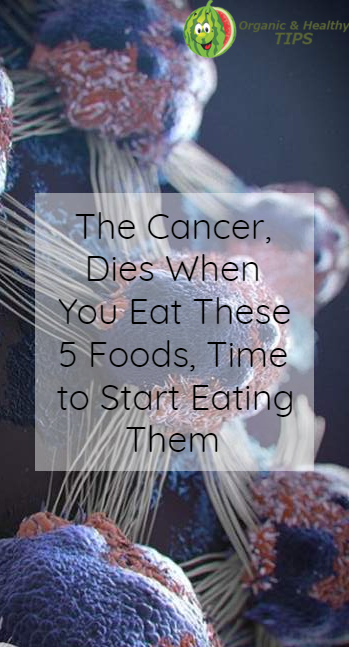According to the American Cancer Society, an estimated 1,660,290 new cases of cancer will be diagnosed in the U.S. before the end of 2013. Of that number, approximately 580,350 Americans, nearly 1,600 each day, will die. After heart disease, cancer is still the second-leading cause of death in the U.S., and is attributed to every 1 in 4 deaths.
Most people are aware of the consequences of smoking, lack of exercise, excessive alcohol use and poor diet. In fact, the World Cancer Research Fund predicts that at least 25% of the estimated new cases of cancer diagnosed in 2013 will result from poor nutrition, sedentary lifestyle and obesity.
It should also be noted that only 5% of cancers are predominantly hereditary. This leaves an open window for other causes for the development of rogue cells with impaired metabolism, such as environmental factors like exposure to radiation, pesticides and other hazardous materials.

Food Fight!
Obviously, adhering to a healthy lifestyle is the best strategy to prevent cancer. A significant part of this defense scheme is diet. Not only is it important to regulate the amount of calories and saturated fat taken in each day, but paying special attention to the quality of the food going in is equally essential.
For those of us who consider label reading and diet planning a chore, remember this: quality is easily measured by origin. In other words, if it comes out of a box or wrapper with a long list of additives, then it’s likely a processed food of poor quality; if it’s grown without chemicals and harvested from the ground or plucked from a tree, then it’s certain to be quality food.
It’s also a good idea to eat by color, meaning turn your dinner plate into an artist’s palate filled with lots of red, green, yellow and purple foods. Chicken, fish and an occasional serving of pork and lean beef is fine, if you so choose. Just keep in mind that the American Institute for Cancer Research recommends that at least two-thirds of your plate be filled with vegetables, fruits, whole grains and beans.
Certain foods are particularly good at warding off cancer. While no single food will perform this feat alone, many types of foods enjoyed in combination on a regular basis can significantly reduce your risk of developing cancer as well as many other diseases. Meet your army of culinary cancer-fighting soldiers:
1. Cruciferous Veggies
This includes vegetables from the mustard family of plants, such as broccoli, cabbage, cauliflower, kale, collard greens, Brussels sprouts, rapini and turnips. Rich in fiber, beta-carotene, folate and vitamin C, vegetables in this group have been shown to promote antioxidant activity by enhancing cell metabolism and regulating cell growth. Compounds in these foods are broken in the body into agents that inhibit enzyme activity associated with inflammation.
Sulforaphane is also an important component in cruceriferous vegetables, a component stored in food as Glucoraphanin. Research has shown sulforaphane to possess anticancer properties. What so great about this compound is that there is no need for supplementation; you can actually eat sulforaphane-rich foods as-is as a preventative measure and still reap its benefits.
2. Fruits
Blueberries contain high levels of bioflavonoids called anthocyanins, which are responsible for the color of blue, purple and red-skinned fruits. In the fruit world, blueberries are a star in terms of antioxidant value from substances like quercetin and kaempferol. Blueberries also contain a compound called pterostilbene, which triggersapoptosis (self-destruction) in lung, stomach, pancreatic and breast cancer cells. Although blueberry is considered top banana in terms of anti-cancer value, other fruits with exceptional antioxidant power include cherries, apples, strawberries and raspberries.
3. Tomatoes
This vegetable and fruit in the nightshade family is an excellent source of lycopene, a compound that targets and destroys free radicals before they can damage healthy cells. Researchers have found that lycopene concentrates in prostate tissue. Studies show that lycopene not only lowers the risk of prostate cancer, but reduces the risk of esophagus, lung, pancreas, cervix and breast cancers as well. While eating raw tomatoes in a salad or sandwich is certainly a good thing, 1 cup of tomato juice or ½ cup of tomato sauce contain more than 5 times the amount of lycopene than a medium raw tomato.
4. Spices
Turmeric, a popular spice in Indian cuisine, gets its golden color from a polyphenol known as curcumin. More than 1,500 studies, including clinical trials in humans, show that curcumin inhibits the growth of cancer cells and triggers apoptosis. The downside to curcumin is that it’s not well absorbed in the intestines. However, black pepper, which contains a chemical called piperine, seems to improve the absorption of curcumin when taken together. It’s important to note, however, that combining turmeric with black pepper upon consumption is minimal without frequent use. So, to recognize any significant benefits, start consuming turmeric this way on a regular basis.
5. Green Tea
Black and green tea come from the same plant — Camellia sinensis. The only difference between teas is how much the leaves are permitted to ferment. Because green tea undergoes less fermentation than black tea, its beneficial compounds – a group of compounds called catechins — are left intact.
Of particular interest in green tea is the presence of a chemical known as epigallocatechin-3-gallate (EGCG), which has been shown to help prevent bladder, colon, stomach, pancreatic and esophageal cancers. Remember what we said about piperine increasing the bioavailability of curcumin? It appears that piperine performs the same service for EGCG. But, similarly to turmeric and black better, you need to make green tea a routine part of your diet if you want to recognize any of EGCG’s preventative anticancer benefits in the long-run.
However, it’s important for you to know…
Although these cancer-fighting foods can have powerful benefits, they are all for prevention. Studies can back their efficacy, but scientists have yet to conduct enough to definitively claim that any of these foods can cure cancer.
Put together casual factors like immune disorders and other metabolic conditions with external factors such as excessive exposure chemicals and it may take 10 years or more for cancer to appear. However, as the American Cancer Society points out, the majority of cancers are preventable. What’s more, a feast of friends ready to fight off cancer foes are in your fridge and pantry right now.
Understanding Food Vs. Cancer
Cancer is a class of diseases characterized by out-of-control cell growth. When mutated cells are rapidly dividing and multiplying, they can form masses (tumors) which are called “malignant” because they continue to spread (unlike benign tumors like sebaceous cysts, for example, which are not made up of cancerous cells).
When cancer cells spread enough to start invading your healthy, normal cells, doctors refer to this as metastasis. It’s also important to understand that cancer cells, unlike normal cells, do not undergo normal “programmatic cell death”. Instead of completing a normal life cycle, they keep spreading. That’s why research that finds new ways to trigger cell death in cancer cells (called “apoptosis”) is so important.







